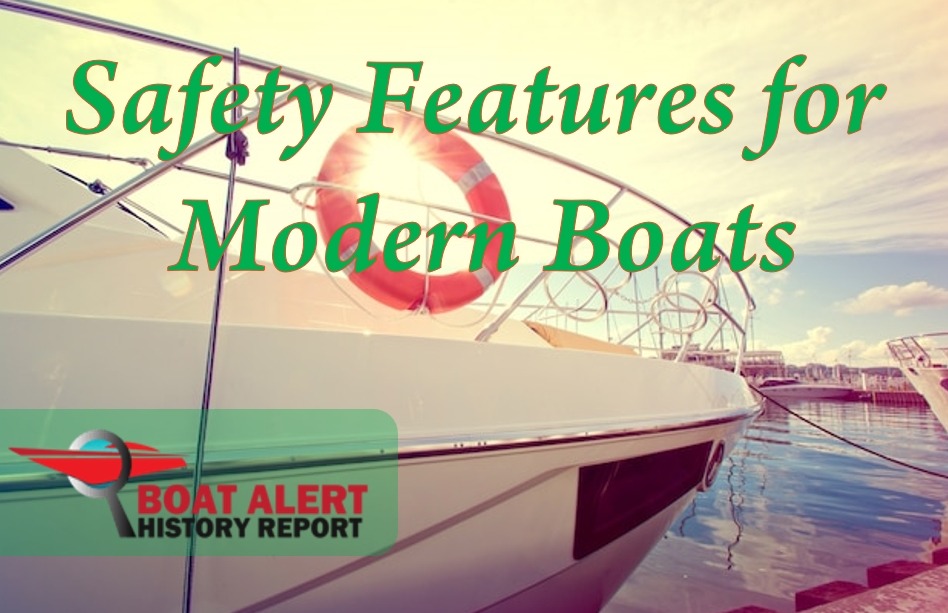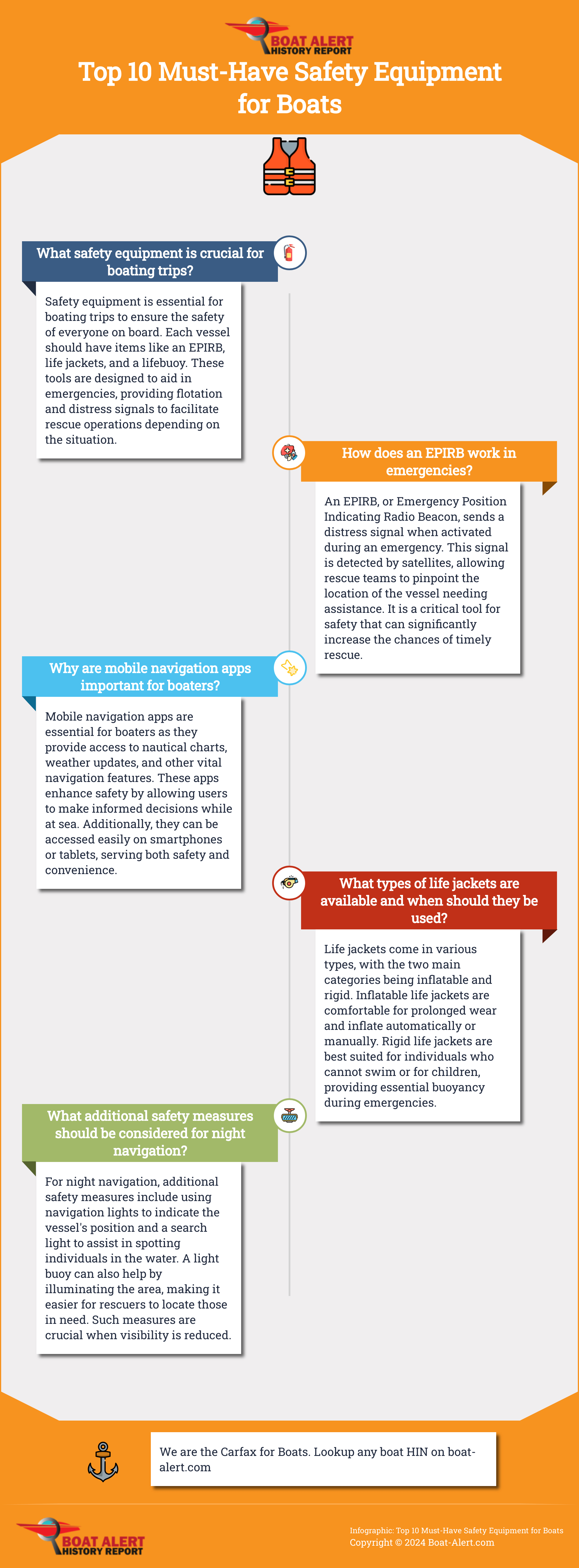Top 10 Must-Have Safety Equipment for Boats

Table of Contents
Introduction
When we go on a sea trip, we think first of all about entertainment and comfort, about new emotions and impressions, about the joy of discovery. But safety on the boat is a top priority! Using a ship has its own rules and safety measures that must be followed.
Here we go over at the basic safety features you must have on your vessel that will help you feel secure on board. Many of these can be as part of a kit or survival backpack.
1. EPIRB (Emergency Position Indicating Radio Beacon).
In the event of an accident, this emergency transmitter sends out a distress signal. These signals, picked up by satellites, enable rescue crews to find the vessel quickly and offer emergency aid.
2. Mobile Navigation Apps
As the landscape of marine apps expands, smartphones and tablets are becoming a valuable addition to safe boat navigation. Apps with nautical charts, weather boat updates, AIS, and other navigation features offer easy access to significant data while at sea.
Besides, modern gadgets and apps make your stay on board not only safe but also comfortable. Even if you have forgotten to take your laptop on board with you, it is elementary to get access to it remotely. You are especially lucky if you are a Mac user. Apple provides several trustworthy ways to remotely access your laptop. Firstly, you can use a remote desktop. For instance, try Google Chrome remote desktop to Mac control and get access to your device from the web browser on any computer. Secondly, utilize Screen Share, and deal with your files and data. Thirdly, a great option is to use file-sharing tools like AirDrop or Dropshare.
3. Immersion Suits
For those in icy water, they offer ideal buoyancy and thermal insulation. They guard against hypothermia, keep water out of the suit, and are composed of neoprene. They become essential for people who are waiting for rescue in cold water for an extended period.
4. Life Jacket | PFD
Life jackets keep people floating in an emergency. They can be of various shapes and sizes. There are two main kinds: inflatable and rigid. Inflatable life jackets inflate automatically when submerged in water, or manually. They are much more comfortable to wear all day than rigid life jackets. Rigid life jackets, on the other hand, are flawless for people who cannot swim and children.
5. Lifebuoy
Lifebuoys provide support and buoyancy to people in the water. Like other means of rescue, they are usually made of bright, highly visible material so that they are easy to spot in poor light conditions.
6. Light Buoy | EVDS
A light buoy is an emergency light source that automatically turns on when it contacts with water. It helps make you more visible to rescuers, especially at night.
7. Search Light
Light-emitting gadgets called searchlights are used to show where someone is in the water. They are used to draw attention and indicate assistance, and they are typically fastened to a life jacket. They make it simpler to locate persons in the water by emitting a signal that flashes and is visible from a distance.
8. Navigation lights
Their task is to indicate the presence, location, type, and nature of the ship in poor visibility. Mandatory ship lights include:
- Top (white and red),
- On-board (green and red),
- Stern or hook (white),
- Circular (the color is determined by the purpose of the ship).
9. Floating smoke bombs | Flares
A floating smoke bomb must:
- evenly emit smoke of a visible color for at least 3 minutes while afloat in calm water;
- do not throw out flames during the entire time of operation of the smoke bomb;
- do not get flooded with water during waves;
- continue smoke formation when it is immersed for 10 seconds in water to a depth of 100 mm.
10. Lifeboats
They are an important element of rescue equipment that has been saving people’s lives for several centuries. Today there are many different types of lifeboats. According to the design, they can be:
| Fully closed | Partially closed |
| They must have rigid watertight enclosures. Their design should allow rowing. Access to the inside is provided through hatches | They are efficient in operation and feature the ability to quickly board a large number of people. They can be installed by two people in about 2 minutes and protect people from cold, heat, wind, and seawater. |
Conclusion
Safety on a board during sea voyages requires careful preparation, knowledge, and attention. Compliance with safety rules, proper equipment for modern boats, and the ability to act in emergencies will help you enjoy your trip and avoid trouble.
Remember that the sea can be unpredictable and your safety depends on your readiness and responsibility.
FAQ
- What to do if a person falls overboard?
- If you see a person overboard, be sure to announce it loudly to the skipper, and try not to let that person out of your sight. Throw the person overboard a lifebuoy, or something that will not sink and will help him stay on the surface of the water. Press the alarm button.
- What to do in a storm?
- During a storm, all passengers must wear life jackets. Put on the harness first, then the vest. If the boat shakes a lot on the waves, you don’t need to try to stay on your feet. If you can’t swim, don’t swim in a life jacket.
#safety #boating #measures #equipment

Categories: To learn more about Boat-Alert.com History Reports for used boats and numbers on a boat visit: www.Boat-Alert.com